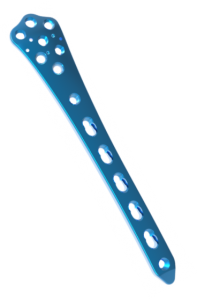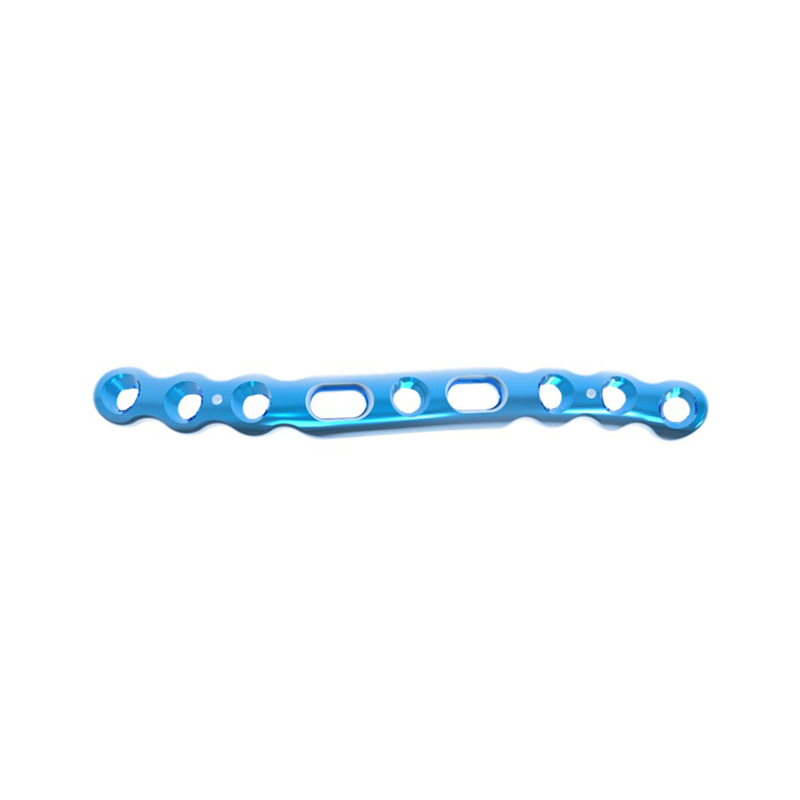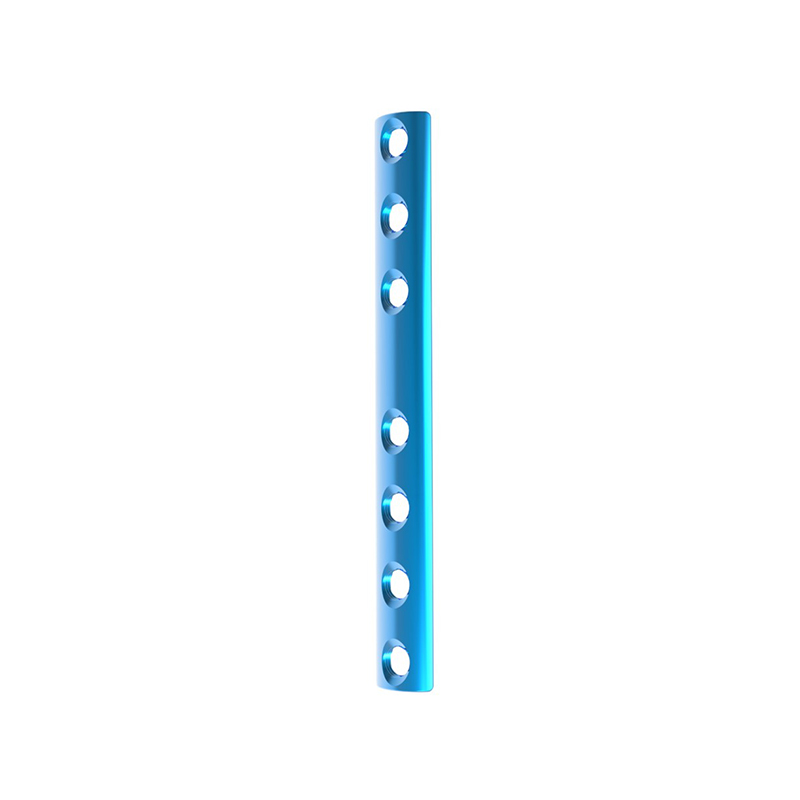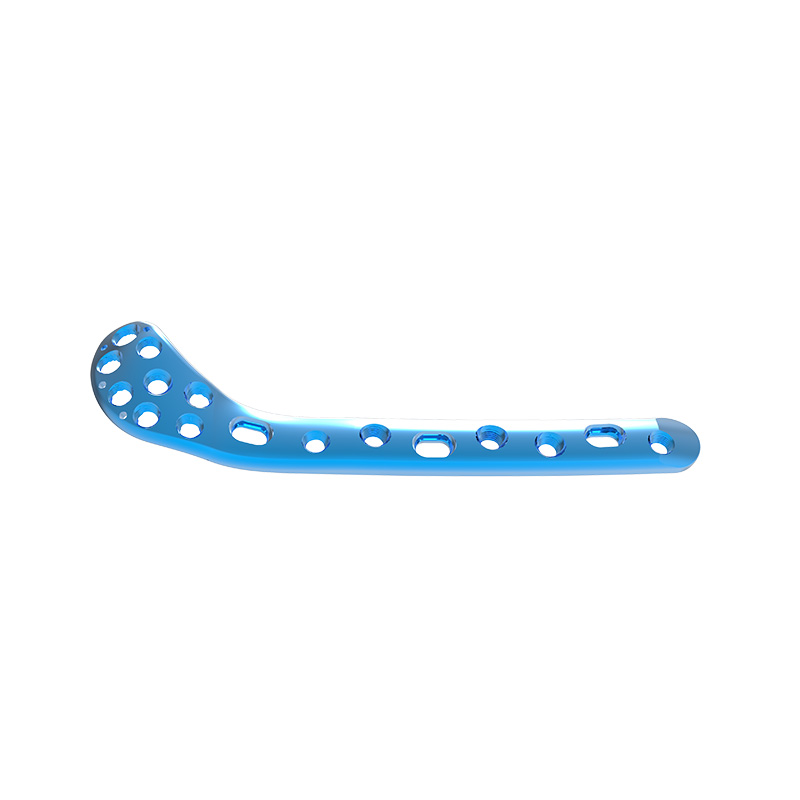Distal Lateral Femur Locking Compression Plate
femur locking plate Features
Preshaped Plate:
The preshaped, low-profile plate reduces issues with soft tissue and eliminates the need for plate contouring.
Rounded Plate Tip:
Tapered, rounded plate tip facilities a minimally invasive surgical technique.

Angular Stability:
Prevents screw loosening as well as primary and secondary loss of reduction and allows early functional mobilization.
LCP Combi Holes in the Plate Shaft:
The Combi hole allows an internal plate fixation using standard 4.5mm cortex screws, 5.0mm locking screws or a combination of both, thus allowing more flexible intraoperative technique.
Optimized screw position in the condyles to avoid intercondylar notch and patellofemoral joint and maximize bone purchase.

medial distal femur locking plate Indications
Distal Femur Plate Indicated for buttressing multifragmentary distal femur fractures including: supracondylar, intra-articular and extra-articular condylar, periprosthetic fractures; fractures in normal or osteopenic bone; nonunions and malunions; and osteotomies of the femur.
LCP Distal femur plate Clinical Application

Femur locking plate Details
| Distal Lateral Femur Locking Compression Plate | 5 holes x 157mm (Left) |
| 7 holes x 197mm (Left) | |
| 9 holes x 237mm (Left) | |
| 11 holes x 277mm (Left) | |
| 13 holes x 317mm (Left) | |
| 5 holes x 157mm (Right) | |
| 7 holes x 197mm (Right) | |
| 9 holes x 237mm (Right) | |
| 11 holes x 277mm (Right) | |
| 13 holes x 317mm (Right) | |
| Width | 16.0mm |
| Thickness | 5.5mm |
| Matching Screw | 5.0 Locking Screw / 4.5 Cortical Screw / 6.5 Cancellous Screw |
| Material | Titanium |
| Surface Treatment | Micro-arc Oxidation |
| Qualification | CE/ISO13485/NMPA |
| Package | Sterile Packaging 1pcs/package |
| MOQ | 1 Pcs |
| Supply Ability | 1000+Pieces per Month |
The Distal Lateral Femur Locking Compression Plate (LCP) is a surgical implant used in the treatment of fractures or other injuries in the distal (lower) part of the femur (thigh bone). Here are some advantages of using a Distal Lateral Femur LCP:Stability: The locking compression plate provides superior stability to the fractured bone compared to traditional plates. The locking screws create a fixed-angle construct, which helps to maintain proper alignment and prevent implant failure. This stability promotes better healing and reduces the risk of complications.Proximal and distal locking options: The Distal Lateral Femur LCP offers the advantage of both proximal and distal locking options. Proximal locking enables fixation closer to the fracture site, while distal locking allows fixation closer to the knee joint. This feature allows surgeons to adapt to the specific fracture pattern and achieve optimal stabilization.Varied screw options: The plate features multiple holes to accommodate different sizes and types of locking and non-locking screws. This versatility enables surgeons to choose the appropriate screw configuration based on the fracture pattern, bone quality, and stability requirements.Anatomical fit: The Distal Lateral Femur LCP is designed to fit the natural contours of the distal femur. This anatomical design helps to minimize soft tissue irritation and improve patient comfort.Enhanced load-sharing: The plate's design distributes the load evenly across the fracture site, helping to prevent stress concentration and reduce the risk of implant failure. This load-sharing property promotes better bone healing and minimizes the risk of complications.Faster recovery: The stability provided by the Distal Lateral Femur LCP allows for early mobilization and weight-bearing, leading to faster recovery and return to daily activities.It is important to note that the specific advantages of using a Distal Lateral Femur LCP may vary depending on the individual patient's condition and the surgeon's expertise. The surgeon will evaluate the specific fracture pattern and determine the most appropriate treatment plan for each patient.










